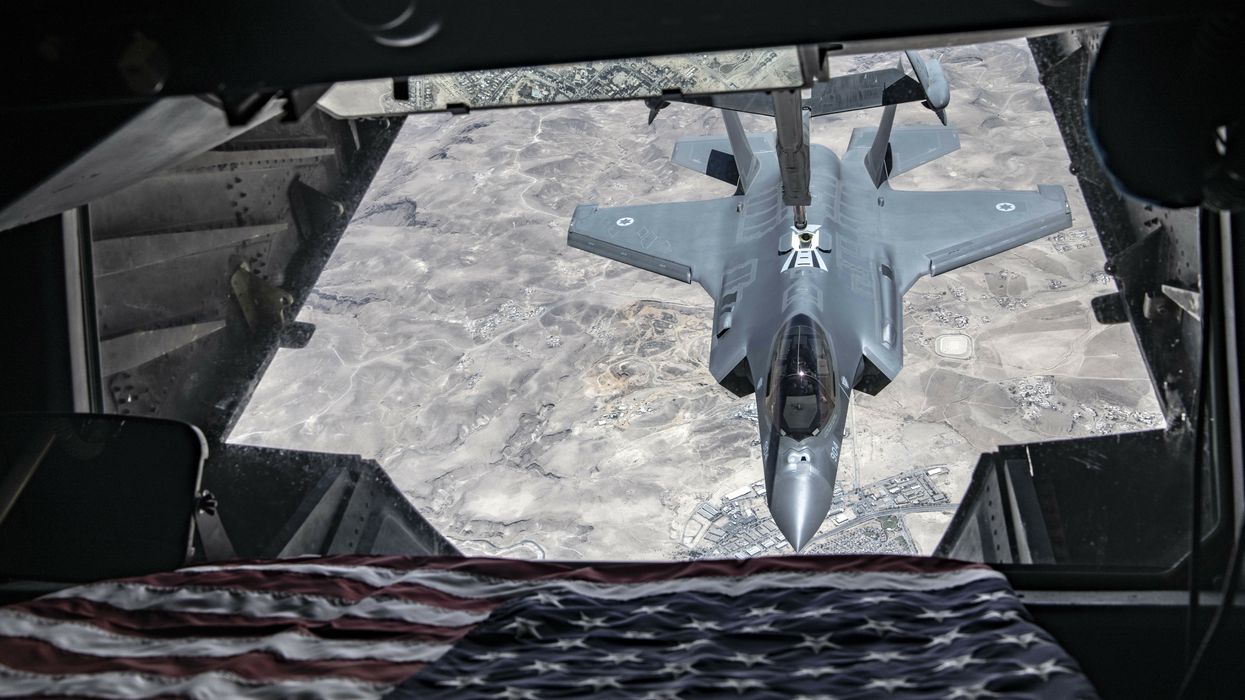For years, reporters and policy analysts have pondered when the U.S. military budget will surpass $1 trillion per year. The number carries symbolic importance and even stands as a goal for some defense hawks, with prominent conservative writer Rich Lowry writing in National Review this past March that “We Need a $1 Trillion Defense Budget.”
It is also a reminder that the Pentagon’s appetite for taxpayer funds grows year by year regardless of the nation’s looming budget constraints — not to mention the numerous economic and social policy challenges that do not or should not invoke a military response.
The nonpartisan Congressional Budget Office (CBO), generally considered the most authoritative crystal ball for federal budget projections in Washington, D.C., currently predicts the U.S. will either near or surpass $1 trillion in defense spending in 2032 (depending on whether you measure spending by budget authority or outlays; I use the former in this piece).
Using alternative and more realistic assumptions about congressional behavior, we could reach a $1 trillion defense budget five years sooner, in 2027.
Although the budget analysts at CBO have near-unmatched expertise and access to federal budget and economic data, they are also chained, in some respects, by rules and assumptions Congress forces them to follow. And CBO budget-scoring rules don’t typically account for the political reality behind defense budgets of the past few years — namely, bipartisan support for plussing up the defense budget by tens of billions of dollars per year.
One potentially flawed assumption in CBO’s current budget baseline, released in May 2022, is that defense spending will total only $828 billion in 2023, a $32 billion or four-percent increase from 2022. The Senate Armed Services Committee passed a defense authorization bill that commits to $857 billion in 2023 spending, a $61 billion or 7.6-percent increase from CBO-projected 2022 levels. The House’s version of the same bill commits to $850 billion, a $54 billion or 6.7-percent increase from 2022 levels.
A year-end agreement between Republicans and Democrats in Congress could fall somewhere in between those two numbers ($850 billion and $857 billion), or lawmakers could agree to go even higher on account of inflation and tensions with Russia and China. Either way, it’s likely the 2023 defense budget authorized by Congress will be much higher than current CBO projections. America’s $70 billion in commitments to Ukraine in 2022 are also starting to make CBO’s projection for just $15 billion in emergency defense spending in 2023 look foolhardy.
All in all, it’s not hard to see the military budget end up closer to $900 billion than $800 billion in 2023, despite CBO’s May projections that it would be just $828 billion.
Another flawed assumption in CBO’s baseline is that defense spending will only increase an average of 2.5 percent per year from 2024 through 2032. During the latter Obama years defense spending actually shrunk, a result of waning U.S. military presence overseas and defense spending caps passed by Congress on a bipartisan basis.
Under the Trump administration though, and in each of the past five years, defense spending has seen huge annual boosts — 5.5 percent from 2017 to 2018, 8.6 percent from 2018 to 2019, 5.5 percent from 2019 to 2020, 3.9 percent from 2020 to 2021, and around 1.9 percent from 2021 to 2022 (these are measured in outlays rather than budget authority, since CBO historical data is readily available for the former but not the latter).
Accounting for these major boosts to the defense budget — and the lack of defense spending caps in the forthcoming years, unlike those in place from 2012 through 2021 — I mapped out three alternative scenarios for the U.S. military budget for my organization, National Taxpayers Union Foundation.
All three scenarios operate from the same initial assumption, that defense spending increases eight percent from 2022 to 2023 rather than CBO’s current projection of four percent. I provide three arguments for why this is a realistic prediction for the defense side of the federal budget:
— A bipartisan majority on the Senate Armed Services Committee has already agreed to increase FY 2023 defense authorization levels to $845 billion, a roughly eight-percent increase from FY 2022
— Over the course of FY 2022 (October 2021 through September 2022), inflation as measured by CPI-U was around eight percent
— In recent bipartisan negotiations over spending bills, lawmakers have aimed for ‘parity’ between defense increases and non-defense increases — as was the case just last year.
An eight-percent boost in 2023 would increase defense spending relative to CBO projections in all 10 years of the current budget window, because it creates a higher baseline in 2023 — upon which I predict lawmakers will keep adding more funds, rather than subtracting them. In the first scenario, defense spending increases only at CBO–projected rates (an average of 2.5 percent per year) for the remaining nine years of the 10-year window (2024–32). In the second scenario, defense spending from 2024–32 increases at a rate 25 percent higher than CBO projections (three percent per year). In the third scenario, perhaps the most politically realistic one, defense spending increases at double CBO-projected rates from 2024–32, around an average of five percent per year.
Under the first scenario, defense spending hits $1 trillion in 2030 instead of 2032. In the second scenario, defense spending hits $1 trillion before the end of the decade, in 2029. And in the third scenario — five percent growth per year, a defense hawk’s dream — defense spending crosses the $1 trillion mark in 2027.
Under that last scenario, defense spending is a whopping $1.5 trillion higher over the course of the whole decade than under current CBO projections. Around this time last year I projected that congressional boosts would cost us $1.2 trillion over 10 years. The absence of budget discipline will place an increasing burden on the shoulders of American taxpayers in coming years.
















